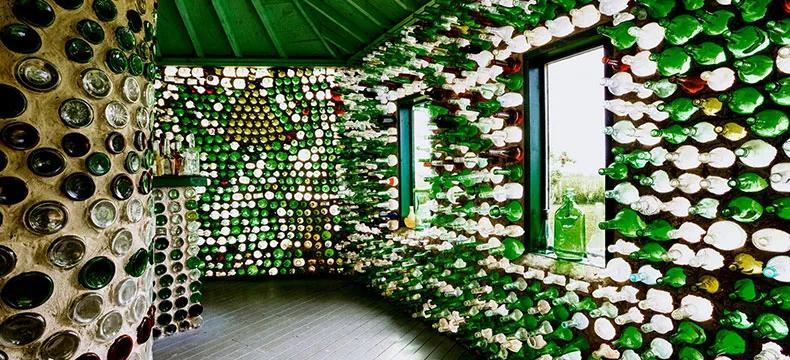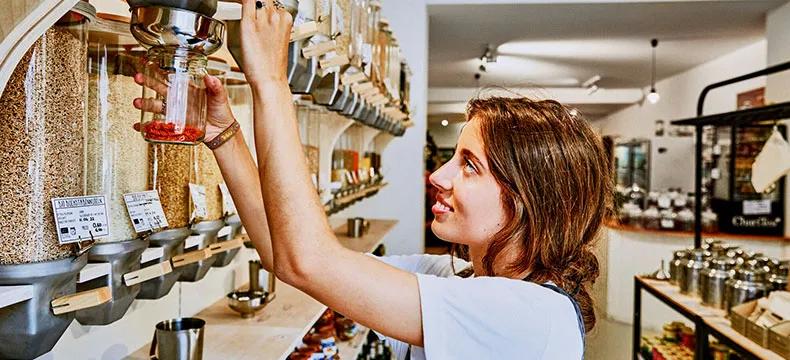
Consume less, preserve more
18 November 2021
Reading time: 3 min
Raw materials are becoming scarcer, and mountains of waste are growing globally. There is no way around it: We need to reduce our overall consumption of resources. Banks are in a good position to help companies adapt their business models to the circular economy.
Produce, sell, throw away - that has been the modus operandi of the European economy so far. However, this model will no longer be sustainable in the future. The new triad must be: reduce, use, recycle. "The circular economy is no longer a nice-to-have, but a must-have," says Stefanie Flora, Director Network Sector Coverage Germany. And there are countless ways to become part of a circular economy – whether through ridesharing or car-sharing apps, recycled fashion, or biodegradable products.
The circular economy is a production and consumption system based on reusable and sustainable design. It aims to eliminate waste from the current linear production system and instead develop regenerative or reusable products and services. An illustrative example of this is the traditional deposit return system, where consumers are given a financial incentive to return their beverage containers back into the cycle for recycling. This reduces dependence on fossil fuel extraction to produce new containers and also saves the energy required for the process.
Sustainable Finance helps with the transformation
The transformation to a circular economy often requires high initial investments. This is the case, for example, when new production processes are to be introduced in order to reduce resource consumption. To finance such projects, finance managers can rely on the growing market for sustainable financial products. Meanwhile, companies can now link the financial products they need to their sustainability performance, such as investment loans, Schuldschein or even bonds or working capital solutions.
"Product as a service" - one of the most powerful business models of the circular economy.

One special business model of the circular economy is the so-called "product as a service" model. This means that the customer only pays for the use of a product without purchasing it. A well-known example of this is mobility services such as bicycles or e-scooters, but tools or other household appliances can now also be rented. What sounds practical for consumers is, however, a challenge for established companies. With usage-based business models, cars, machineries, or any other goods remain on the balance sheet of the manufacturing companies. This fundamentally changes group management, stretching the balance sheet, changing cash flow, new risks, and even completely new billing procedures. This is where banks come in: "We support our customers in the transformation to "product as a service" models, explains Flora.
Changing supply chains
Both the business model and the supply chains pose challenges for companies that want to switch to a circular model. Closing the loops within supply chains requires a successful reverse logistics strategy. The latter enables the return of products at the end of their life cycle.
Since a single organization in the supply chain cannot close the entire loop on its own, coordination and cooperation within the supply chain are particularly important in circular business models. It is necessary to determine which standards are required for materials and transports. The contractual interaction of the supply chain partners involved forms an important building block in this process. As producers of raw materials, recycling companies are making a major contribution to the switch to circular supply chains.
Supply chain technologies additionally support the implementation of a circular supply chain strategy. Intelligent supply chain systems enable end-to-end transparency as well as traceability in the supply chain. The final step is for companies to adjust their working capital financing.
Banks and companies working together for the Circular Economy
The circular economy makes an enormously important contribution to greater sustainability and serves to protect the climate. For companies, switching to a circular economy model can be well worth the effort. In addition to a strong commitment to the conscious use of resources and greater environmental protection, the company simultaneously invests in a sustainable business model. However, as the transformation also poses some challenges, banks can support their customers at various points in the process to help them operate more sustainably.
Read more about our sustainable financial products and how we work with our customers to achieve greater Opens in a new tabsustainability.
You liked this article? Then you might also like this one:
Transformation has become the buzzword of the day. Many companies are currently setting out to make their business model sustainable for the future.
Green Advisory: Managing change together
